Tue, 26 Aug 2014 . Last updated Thu, 18 Jun 2015 14:18

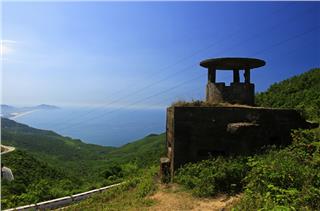
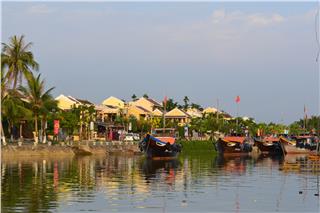
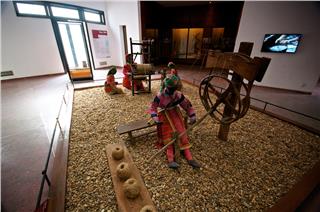
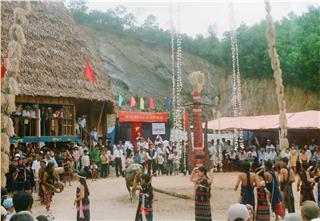

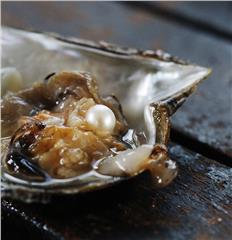

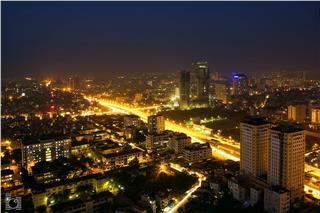
Among the Tran dynasty relics in Dong Trieu (Quang Ninh), not far away from the town of Dong Trieu, An Sinh temple (previously known as An Sinh palace) is considered one of the most sacred religious building. It lies on a low hill of Trai Loc village, An Sinh commune, Dong Trieu district. In today’s Cultural Heritages, we will be visiting this sacred temple.
Dong Trieu is a land of heroes and talents, and just like the rest of the country, it has gone through a glorious history. Together with many fascinating festivals, the area is also the home of many historical sites that are important to Quang Ninh province in particular and the whole country in general. Among those is the ancient Ven village with the temple of the female general Le Chan who served under Hai Ba Trung reign. The historical sites of Yen Duc, Quynh Lam pagoda, Non Dong Pagoda, Ho Thien Pagoda and finally, Ngoa Van Pagoda, where Tran Nhan Tong, King and Founder of Truc Lam Yen Tu Zen Sect, passed away. Especially, Dong Trieu is considered the scared land of the Tran Dynasty, the most prosperous dynasty of the Vietnamese Feudalism. It is home to a system of worshipping temples and tombs of the Tran Kings who ruled the dynasty. The historical monuments and cultural heritages of the Tran Dynasty are found all over the country. However, they are mainly concentrated in Thang Long (Hanoi), Thien Truong (Nam Dinh) and Dong Trieu (Quang Ninh). In Dong Trieu, the historical monuments of the dynasty are concentrated in An Sinh commune.
There are 133 pagodas, temples and shrines in Dong Trieu, 26 of which are recognized as provincial or national heritages. Dong Trieu was one of the cultural centers of Dai Viet in XIII, XIV centuries. Archeologists and historians have proved that Dong Trieu was the sacred land of the Tran Dynasties, because 11 among 14 Kings of the Tran Dynasties chose Dong Trieu to place their tombs and temples. As of the Truc Lam School of Zen, Dong Trieu was the original center since the founder of this school. The King-Monk Tran Nhan Tong chose to live his last years in Ngoa Van pagoda, Tay Son, Binh Khe, Dong Trieu.
Under the Tran Dynasty, Dong Trieu is the center of Buddhism and hence, the center of Buddhism architecture with many pagodas and towers. All these structures were built for the Zen school of Truc Lam – Yen Tu, which was founded by King-Monk Tran Nhan Tong. This Zen school untied all the schools of Vietnamese Buddhism at the time and quickly became the national Buddhism school that influenced the religious life of the whole country. Under the Tran Dynasty, Dong Trieu was also economically developed since moost of it was the land and farms of the Royal family members. Many historians hence believe that Dong Trieu was the cultural center of the Tran Dynasty. An Sinh or Yen Sinh, Dong Trieu is the original homeland of the Tran Royal Family. The ancestors of the Kings were fishermen for generations and some of them migrated to the estuary areas of the Red River for settlement. They eventually settled down in Tuc Mac, Thien Truong district (Nam Dinh province nowadays). The family then seized the throne and became the Royal family of Vietnam in 1225. The first King, Tran Canh (or Tran Thai Tong), in 1237 granted his elder brother, Tran Lieu, the areas of Yen Sing (Dong Trieu), Yen Phu (Kinh Mon), Yen Duong, Yen Bang (Uong Bi, Yen Hung) and assigned him the task of worshiping the family ancestors and taking care of their tombs. Tran Lieu was the father of the Heroic General Tran Hung Dao, who has been worshipped as a Saint by Vietnamese people. Kings of Tran Dynasties defeated the Mongolian invaders twice in 1258 and 1285, in order to prevent the enemy from destroying the tombs of their ancestors; they moved all the tombs to the remote area of An Sinh, their hometown which was under the protection of Tran Lieu’s family.
After the third victory against the Mongols in 1288, the country entered a long period of peace and prosperity. The tombs in An Sinh were hence renovated and became much grander. Every year, the Kings, the Royal Family and all the mandarins serving them would travel there to worship and remember their ancestors in the various temples and tombs. People in neighboring areas also flocked to An Sinh to attend the festivals. In 1381, the Tran Dynasty started to show signs of decline. There were riots all over the country and the Kingdom of Champa started their invasion of the Empire. Once again, to prevent the destruction of the wars that would happen in the provinces of Thai Binh and Nam Dinh, the tombs of Tran Royal Family were moved to An Sinh. The An Sinh Palace was constructed to worship all the Tran Kings. An Sinh, Dong trieu officially became the sacred land of the Tran Kings. This is the An Sinh temple (or An Sinh palace), where the 8 Kings of the Tran Dynasty are worshipped. The Tran Dynasty was the most glorious empire in the Vietnamese history with 3 victories over the Mongols. The temple sts on a small hill of An Sinh commune, Dong Trieu district. According to the ancient Feng-shui, the temple lies on the back of a giant tortoise and faces south, the best of the four cardinal directions. This position was undoubtedly chosen very carefully according to the ancient theory of Feng-shui, which was used widely in building houses, pagodas, temples and shrines. The time and wars have demolished the old temple, leaving only ruins of the floors, materials, relics and steles. The rest of temples, palaces, tombs are lost.
Recently, the government and local authorities as well as the local people and the descendants of the Tran Royal Family living all over the country have together reconstructed a new An Sinh temple on the ground of the ruined one. The new An sinh temple has an area of 2.5 hectares. It has three parallel buildings connected by two hallways which are similar to the traditional religious architecture of Vietnam. The building has two storeys with 8 curved roofs. The decorations on the doors, the ceilings, roof corners and rooftops… look strong but soft indicating the development in aesthetics and culture of the Tran Dynasty. Tien Duong (Front Hall) consists of 3 compartments and 2 lean-tos on either side. The compartment in the middle has the main worshiping altar of the temple.
On the two sides are the altars to worship the God of the Land and the God of the Mountain. In the middle of the house is a horizontal lacquered broad with the inscription “Dong A Hien Thanh”. The first characters Dong and A mixing together make up the word “Tran”. This golden sentence means all the Kings of the Tran Dynasty are worshiping as the Saints. On the two sides are two wood panels with the following distich: “Even the stone horses are tied of the two wars. Yet our homeland would stand for thousands of years”. This distich was written by King Tran Nhan Tong after the two wars against the Yuan (Mongol) armies in 1258 and 1285. It shows the determination to defeat the enemy and bring everlasting peace to the Empire. The worshiping hall consists of compartment and two lean-tos on either side. The main compartment is used to worship Saint Tran Hung Dao. The statue of the saint here is made of sandstone, which was taken from the Nhoi Mountain in Thanh Hoa. The statue was sculptured in a sitting position. The Saint is holding Binh Thu Yeu Luoc or the book of warfare essentials, his most famous work with the thoughtful face.
On the two sides is the distich that reads “Hung Dao Dai Vuong (Tran Hung Dao) has passed into history. The glorious victories on the Bach Dang River were of the Tran Dynasty”. The rear palace consists of 5 compartments and 2 lean-tos. It is the palace to worship the 8 Kings of the Tran Dynasty in An Sinh, Dong Trieu. All the statues, horizontal lacquered boards, districts and worshiping objects were donated to the temple by the people. An Sinh temple is one of the 14 spots in the relics of Tran dynasty, worshiping 8 Tran Kings. An Sinh has also the important meaning. Many have wonders why there are only 8 Tran Kings worshiped in An Sinh temple while there are 14 Tran Kings. That is because local people in Dong Trieu restored only the tombs of the kings who had tombs in Dong Trieu formerly.
The horizontal lacquered boar has the inscription “Thanh Cung Van Tue” which hails the great contributions of the Kings. The middle altar is for worshipping the first 2 Kings, all the other Kings’ statues are placed symmetrically from right to left. Tran Thai Tong as the king who founded the Dynasty. His birth name was Tran Canh. He was born on June 16, the year of Mau Dan (1218). He was crowned King at the age of only 8 and remained on the throne for 33 years from 1225 to 1258. Then he abdicated and acted as Thai Thuong Hoang (Father of the King) for another 19 years. He passed away in the summer, April 1, year of Dinh Suu (1277) ay Van Tho Palace at the age of 60 and was buried in Chieu Lang tomb. In 1381, his body was moved to Tu Phuc Tomb in An Sinh commune, behind An Sinh temple now.
Tran Thanh Tong was the second King of the Dynasty, his birth name was Tran Hoang. He was born on September 25, the year of Canh Ty (1240). He was crowned King at the age of 18 (1259) and remained on the throne for 21 years, from 1258 to 1278. He acted as Thai Thuong Hoang (Father of the King) for 13 years. He passed away in the summer, May 25, year of Canh Dan (1290) at Nhan Tho Palace at the age of 51 and was buried in Du Lang tomb. His body was moved to Tu Phuc Tomb of An Sinh in 1381.
Tran Anh Tong was the fourth of the Dynasty. His birth name was Tran Thuyen. He was born on September 17, the year of Binh Ty (1276). He was crowned King at the age of 17 (1293) and remained on the throne for 21 years from 1293 to 1314. He acted as Thai Thuong Hoang (Father of the King) for 6 years. He passed away in spring, March 13, year of Canh Than (1320) at Trung Quang Palace, Thien Truong district, at the age of 45. Tran Minh Tong was the fifth King of the Dynasty. His birth name was Tran Manh. He was born on August 21, the year of Canh Ty (1300). He was crowned King at 14 (1314) and remained on the throne for 15 years and acted as Thai Thuong Hoang for 28 years.
Tran Hien Tong was the sixth King of the Dynasty, his birth name was Tran Vuong. He was born on May 17, the year of Ky Mui (1319). He was crowned King at 10 (1329) and stayed on the throne for 13 years, from 1329 to 1341. Tran Du Tong was the seventh King of the Dynasty. His birth name was Tran Hao. He was born on October 19, year of Binh Ty (1336). He was crowned King at 6 (1341) and remained on the throne for 28 years (1841-1369).
Tran Nghe Tong was the eighth King of the Dynasty. His birth name was Tran Phu. He was born in December, the year of Tan Dau (1321). He was crowned King at 55 (1370) and was on the throne for 3 years (1370-1372) and acted as Thai Thuong Hoang for 27 years. Tran Gian Dinh was the thirteenth King of the Dynasty. His birth name was Tran Quy and he was the second son of Tran Nghe Tong. He was the king for 3 years (1407-1409). He tried to restore the power of the Tran Family but failed. He was captured and brought to Kim Lang (China) by the Mings.
Dong Trieu, as mentioned before, has many relics of the Tran Dynasty including the tombs of King Tran Due Tong and Tran Thuan Tong in the Ngoc Thanh Mountain, Thuy An commune, Thai temple, the shrine of Princess Ai Lao. When looking at the history of Buddhism in Vietnam, we can see that Tran Nhan Tong was the King who defeated the Mongols twice in the XIII century. Not only did he bring the peace to the country but he also founded the Truc Lam School of Zen, a unique Vietnamese school of Buddhism. He spent the last years of his life in An Sinh and passed away in the pagoda of Ngoa Van. His Sarira is placed in the “Phat Hoang” tower, which lies on the top of Ngoa Van Mountain on the Thien Ky Son Range.
In order to fully understand the cultural and historical values of An Sinh temple, in today’ Views on Heritage, we will talk to Mr. Nguyen Van Anh M.A, who works at Vietnam Academy of Social Sciences and has been studying the relics of the Tran Dynasty for years. The Tran dynasty relic complex in Dong Trieu was recognized as a Special National Heritage by the Prime Minister. What is the important aspect of this complex, in your opinion?
The relic complex was one of the first relics recognized as National Heritage in 1962. The tombs themselves are very important. We all know that the Tran dynasty was the most prosperous dynasty in our history. Together Ly Dynasty, Tran dynasty is considered one of the most developed periods in Vietnam. The tombs, temples, palaces clearly demonstrate this development. It was believed in feudal times that the area to place their capital is the most important thing to consider, it is the Yang. The second important thing was construction of temples, shrnes and tombs, which represent the Yin. Yin and Yang together contribute to the prosperity of a dynasty. Dong Trieu has both Yin and Yang aspects. It has the palaces, which represent the Yang and the temples, shrines and pagodas which represent the Yin. The royal architectural style is shown clearly in most of the tombs. Visiting An Sinh temple, we have the chance to get better insights into the complex of Tran Dynasty relics in Dong Trieu. We can also understand more about the historical values through the relics displayed in the Museum of the temple. Those are the values that cannot be ignored when visit and learn about this complex.
The Festival of An Sinh temple is celebrated on the day the temple inaugurated, the 20th of Lunar August, which is also the day Saint Tran Hung Dao passed away. The festival lasts for 3 days. The first ceremony is a dance by the dancers of An Sinh commune. After that is a speech and worshiping rituals. The children then perform martial arts while the elderly also have their own performances. Then comes the worshiping ceremonies from rural communes of Tan Viet, Binh Duong, An Sinh, Thuy An (Dong Trieu) and Le Chan (Hai Phong).
Many Vietnamese leading historians and archeologists presented their researches and studies on the Tran Dynasty of Dong Trieu, Quang Ninh. The scientific studies that were presented at the seminar organized by the Local People’s Committee and the Capital Study Centre (October, 2012) were announced in the festival. The relics of the period were put on display in the Museum of Tran’s Cultural Heritages in An Sinh temple. The most valuable of them might be the golden box unearthed in a temple of Dong Trieu in June, 2012.
The Festival of An Sinh temple in 2014 is very important because in the opening ceremony, recognition of the temple as a Special National Heritage by the Prime Minister will be announced and Dong Trieu will be recognized as a 4-class town. The recognition of the temple as a Special National Heritage is a great pride for Dong Trieu. It is also our responsibility to protect and preserve this temple so that it remains in the best condition. When visit the An Sinh temple, in the silence of space and time, it seems that the chant of “Sat That” (Kill the Mongols) can still be heard.
During its 175 years, the Tran Dynasty left many memorable milestones and achievements in politics, economy, culture and Buddhism. The An Sinh temple is truly the place where the great Kings of the Tran Dynasty are worshiped and remembered for good.
Source: VTC10 – VTC.com.vn

 Đặt vé máy bay cho người Việt?
Bấm vào đây
Đặt vé máy bay cho người Việt?
Bấm vào đây
Our service uses cookies for technical, analytical and marketing purposes. See our Cookie và Privacy policies for more information. If you agree to this, just keep browsing.


